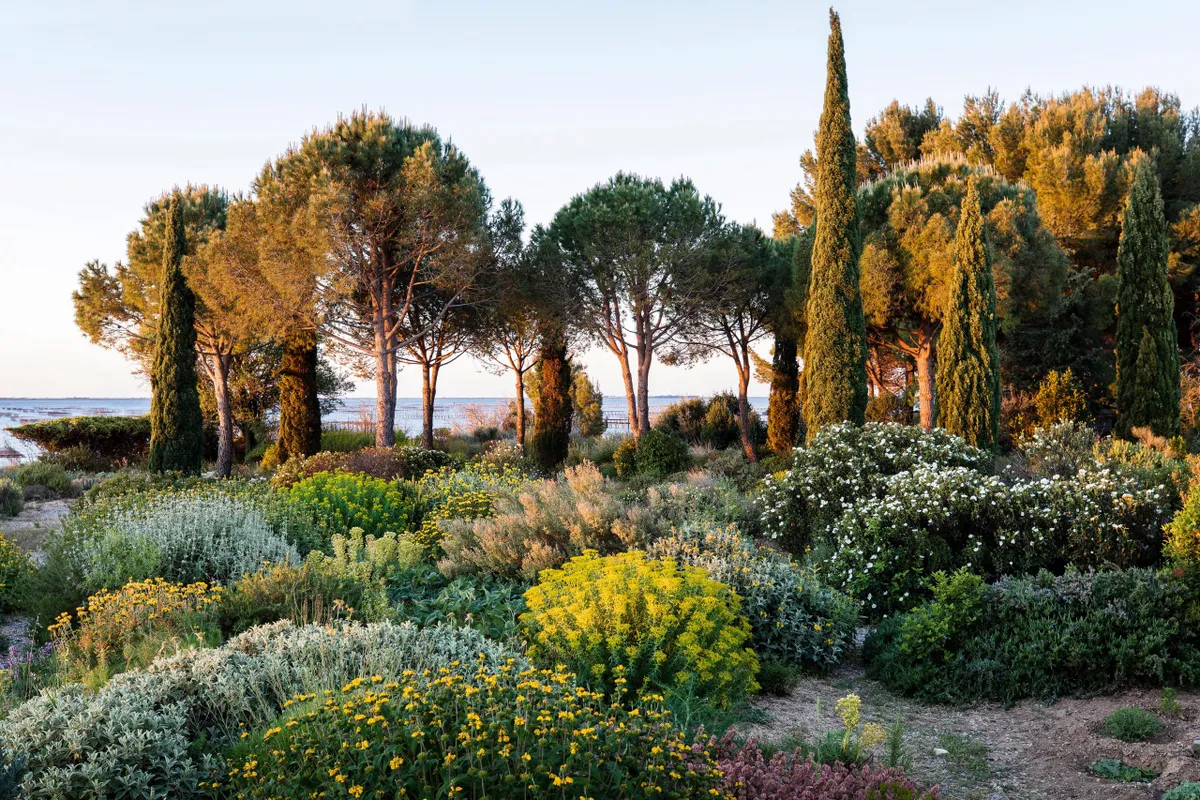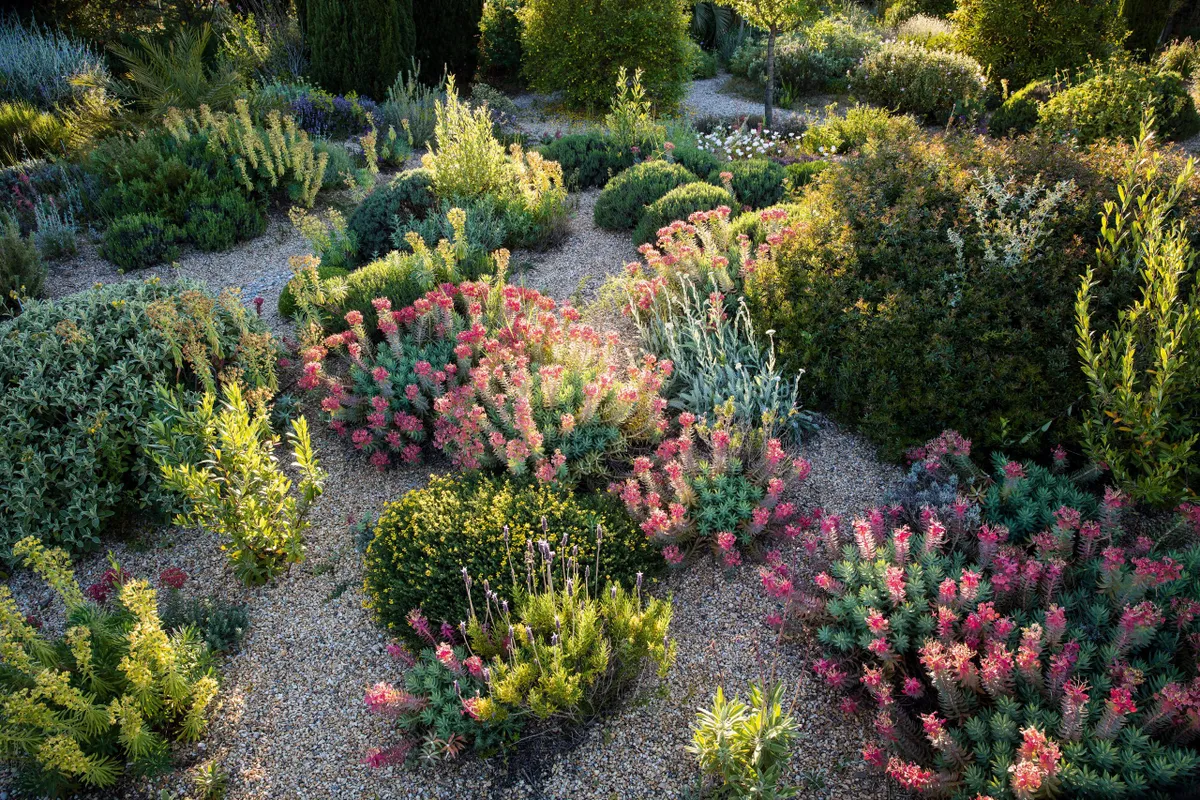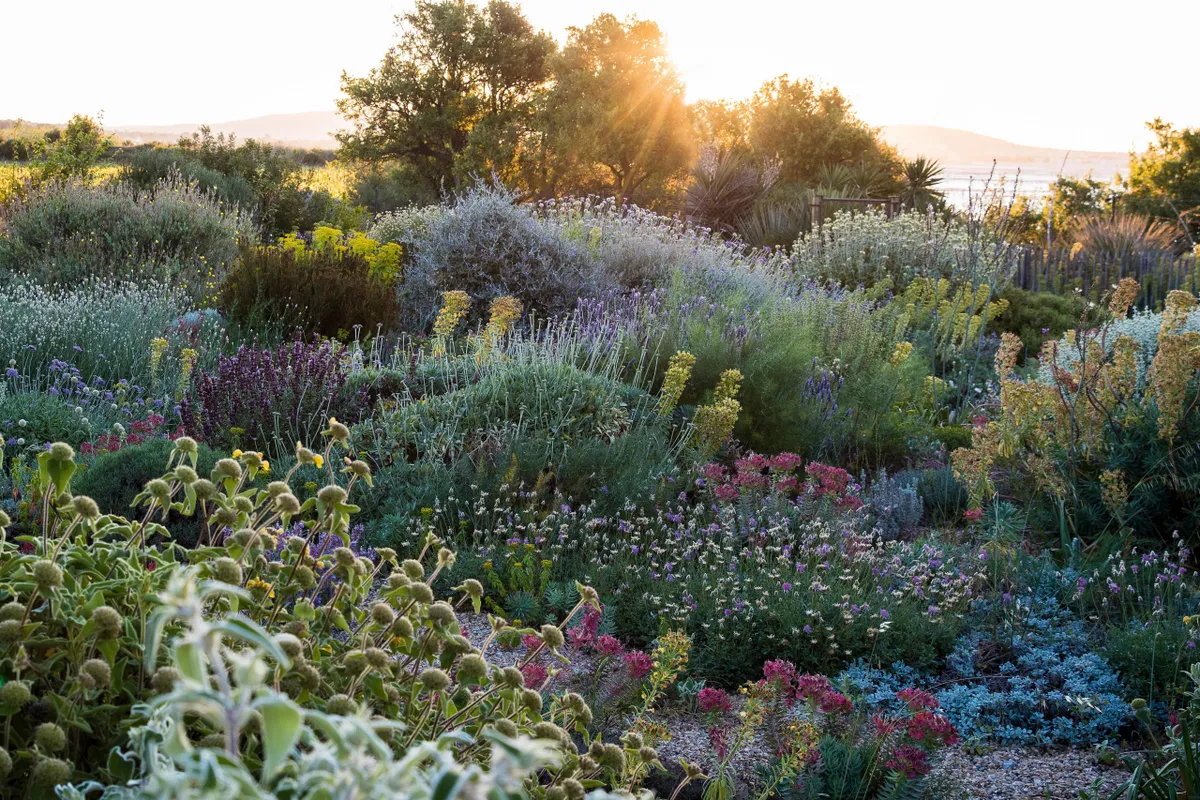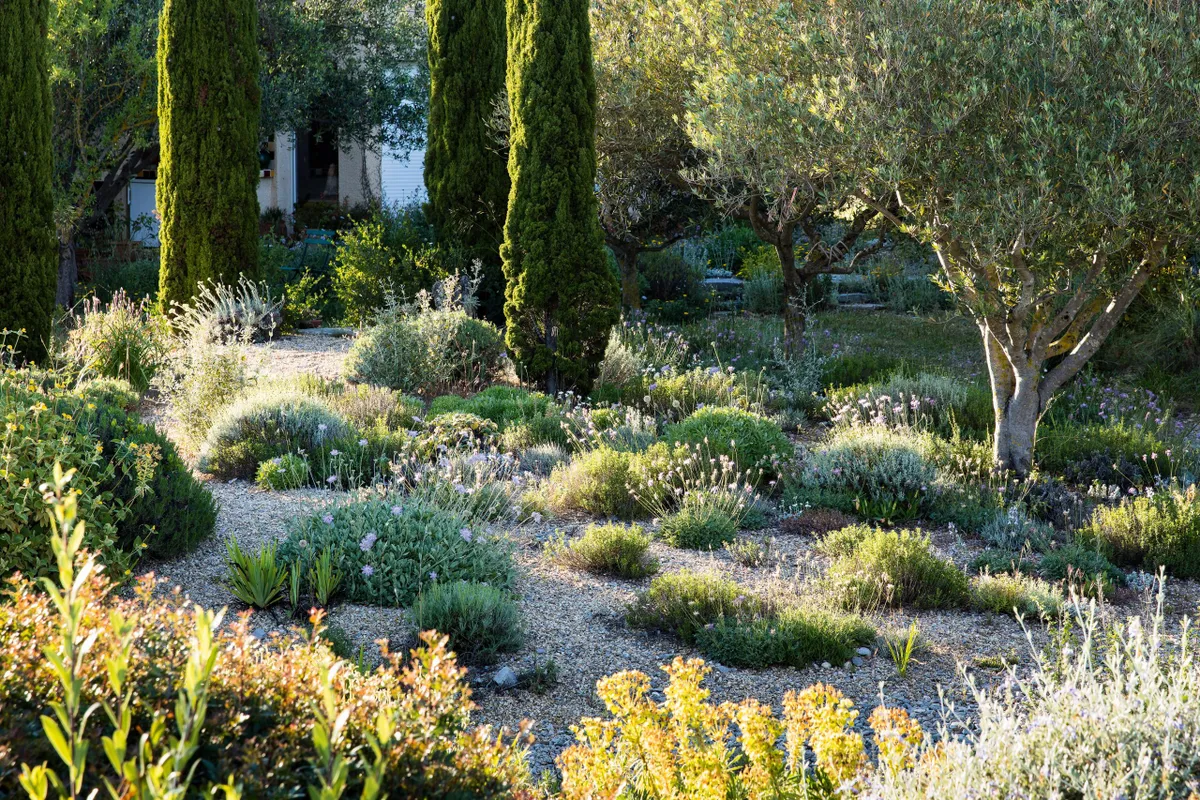Nestled between the cliff and Olivier and Clara Filippi's home, near Montpellier in France, this experimental gravel garden was developed to test the numerous Mediterranean plants the Filippis have collected on their travels. Early May provides one of the richest flowering moments at Le Jardin Sec but by high summer almost all the flowers will be gone leaving a subtle palette of silver, green and brown. Below are four planting combinations from the garden, using drought-tolerant plants and their careful consideration of irrigation.
Discover more drought tolerant plants from Le Jardin Sec and beyond

With the lagoon beyond, the complementary forms of billowing Pinus pinea and upright Cupressus sempervirens Stricta Group work as an effective frame for the tapestry of texture playing out in front. Expansive Cistus x cyprius f. albiflorus, lights up the scene with masses of clean white flowers, while the acid-yellow of Euphorbia ceratocarpa, is picked up in the warmer yellow of Phlomis longifolia. The rising silver stems of Phlomis purpurea ‘Torcal de Antequerra’ contrast well with the greens and yellows.

Rivers of gravel flow between the clipped mounds of aromatic shrubs providing both a visual pause but also necessary channels to help divert flood water from the plants during the heavy storms of autumn. The egg-yellow pea flowers of Coronilla minima, which has nitrogen-fixing roots able to handle the poorest soils, provide a focal point to the generous swathes of Euphorbia rigida, while the silvery flower stems and feathery foliage of Achillea clypeolata provide another contrast of texture and colour.

Bordered by the evergreen foliage of Phlomis bourgaei, a competitive interlocking of allelopathic groundcovers, includes the pale-lilac cornflowers of Centaurea bella that rise above its mat of silver-green foliage blurring into the low-growing Tanacetum densum subsp. amani. Both produce negatively allelopathic chemicals suppressing weeds and make a low-maintenance combination. Colour comes from the senescing flowerheads of Euphorbia rigida and the purple verticals of Salvia interrupta x Salvia candelabrum.

Olive trees and Italian cypresses act as anchor points, while in the foreground smaller shrubs, such as the evergreen Myrsine africana, provide structure and textural contrast for the playful planting behind. Among the rounded mounds the pincushion blooms of Lomelosia minoana complement the wiry flower stems and papery seedheads of Centaurea bella. Lomelosia (previously Scabiosa) is a tough, allelopathic plant, providing blooms through the heat of summer from March to July.





